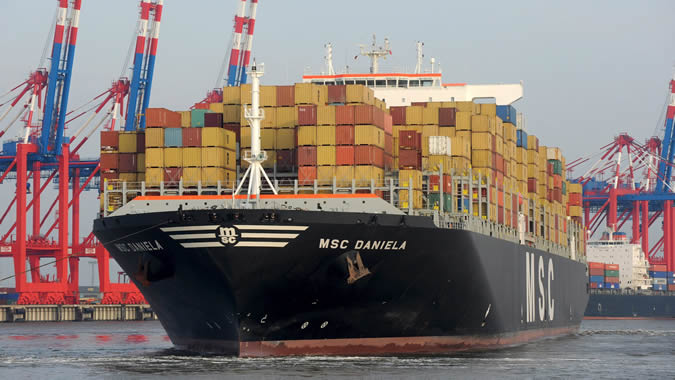Container Trade in the Region’s Ports Rises 1.3% in 2014
Work area(s)
Topic(s)
ECLAC’s updated ranking confirms the slowdown in foreign trade shown by the container terminals of Latin America and the Caribbean in recent years.

(June 11, 2015) The movement of cargo in containers in Latin American and Caribbean ports grew 1.3% during 2014, according to figures released today by the Economic Commission for Latin America and the Caribbean (ECLAC).
The United Nations organization unveiled a new edition of its ranking of container port throughput, published in its Maritime Profile, which confirms great heterogeneity: with increases on the west coast of South America (5.3%), Mexico (4.0%) and Central America (3.4%), and declines on the east coast of South America (-2.2%) and the Caribbean (-8.2%).
Nevertheless, the regional average of 1.3% shows stagnation in port movement growth, considering that this figure marked 1.7% in 2013, 5.8% in 2012 and 13.8% in 2011.
The total volume of activity in 2014 was approximately 47 million TEU (a standard unit of measurement, equivalent to a container of 20 feet, or 6.25 meters, which is to say, a metallic box of standardized size that can be transferred easily between different means of transportation, such as ships, trains and trucks).
The first 40 ports in the ranking accounted for nearly 89% of the operations involving this type of cargo, with activity levels of 41.8 million TEU, while another 80 smaller ports divided up the remaining 11% among themselves (5.2 million TEU).
ECLAC’s analysis reveals great heterogeneity in the performance of port movements, both at a sub-regional level as well as by country. Mexico showed an improvement, going from a contraction of -0.1% in 2013 to growth of 4.0% in 2014, while Central America rebounded by growing 3.4% last year versus a -2.0% fall in 2013. In South America, the west coast improved its growth to a rate of 5.3% in 2014, up from 3.8% in 2013.
The data of three countries stood out: Colombia (with a rise of 7.0%), Peru (8.7%) and Ecuador (7.9%).
The limited dynamism of the region’s ports in 2014 was determined mainly by the above-mentioned fall in the Caribbean area and on the east coast of South America, where in the first case transfer operations represent a significant volume of port activity. This was explained mainly by Jamaica, the Bahamas and the Dominican Republic, which showed annual declines of -3.9%, -6.7% and -9.9%, respectively, and Argentina with -22.4%.
Just as in previous periods, the reasons behind growth, deceleration or an outright decrease in port activity are varied. Some ports registered positive figures due to the success of their projects and commercial management, while others were affected by low trade performance in general and some operational problems.
According to ECLAC, the stagnation observed in port movement growth largely stems from, in addition to the organic components mentioned previously, the changes in the nature of port activity that have occurred since the last wave of reforms in the region’s terminals. Modern ports require a more sophisticated and complex governance to enable the port system to achieve goals that are useful for countries’ economic development, such as greater levels of services, efficiency, productivity and competitiveness.
Furthermore, new governance is needed for the integration of the logistics chain in the framework of comprehensive and sustainable public policies, based on an integrated and systemic view, the organization indicates.
Related content

Ports Ranking. The Top 20 in Latin America and the Caribbean in 2014
ECLAC updates every year its ranking of container port throughput, which shows the cargo volume in containers in 120 ports of the region, based on data obtained directly from port authorities and…
Country(ies)
- Latin America and the Caribbean
Contact
Public Information Unit
- prensa@cepal.org
- (56 2) 2210 2040